Millions of people around the world use period products every month. Bárbara Pinho finds out what their environmental footprint is and whether they carry chemicals harmful to human health
-
Chemical concerns in period products: The article highlights the presence of harmful chemicals, such as heavy metals and microplastics, in period products like tampons and pads. These substances raise health concerns due to their potential to leach into the body and cause adverse effects.
-
Environmental impact: It discusses the significant environmental footprint of single-use menstrual products, which contribute to pollution and waste. The article emphasises the need for more sustainable options, such as reusable pads and menstrual cups, while considering cultural and practical challenges.
-
Health risks and research gaps: The article points out the lack of extensive research on the health impacts of chemicals found in period products. It calls for more studies to understand how these substances affect human health, particularly through exposure via the vaginal mucosa.
-
Innovative solutions: The article explores new developments in period products, such as the SunPad, a reusable pad with antimicrobial properties activated by sunlight. These innovations aim to provide safer and more environmentally friendly options for managing menstruation.
This summary was generated by AI and checked by a human editor
When Jenni Shearston flew from the US to Greece in 2022, she had two plans. One was to attend the annual conference of the International Society for Environmental Epidemiology in Athens. The other was to buy tampons while she was there.
At the time, she was studying period products and what harmful substances they might contain. To ensure she had a global perspective, she bought tampons from multiple locations, including Greece. ‘We wanted to select a variety of different tampon products that were easily available on the market,’ says Shearston, who was a PhD student at the time and is now an environmental epidemiologist at the University of Colorado Boulder in the US.
From the long-established sanitary pads and tampons to more recent solutions like menstrual cups and period pants, these products vary somewhat in shape and size. But despite the fact that 1.8 billion people across the world menstruate and use them every month, we surprisingly know very little about what period products are made of – and how they might impact human bodies.
‘There just aren’t a lot of papers out there,’ explains Shearston. Together with her colleagues, she worked on a review about how menstrual products could be a source of environmental chemical exposure. ‘I think there were 24 papers that we found when we did that review, and in the world of science that’s a very small number.’
Shearston went on to work on the tampons from Greece and other countries in a study that looked at metal concentrations in period products. She and her adviser were interested in the fact that tampons are a more invasive product compared to menstrual pads, as they stay inside the vagina for consecutive hours.
They shredded each tampon to prepare samples and then measured for traces of 16 metals, including lead, copper and iron. Their results showed that all of the metals assessed were present in quantifiable concentrations. The team found lead in all the tested tampons, as well as several other toxic metals like cadmium and arsenic. ‘We did not expect to see every single metal we tested for present. We didn’t expect to see [lead] concentrations of 120 nanograms per gram on average,’ Shearston adds.
Zooming in on period products
On average, a person who menstruates will spend around 65 days each year bleeding. While cycle length and flow can vary, everyone who menstruates needs a safe and hygienic way to manage the blood and uterine lining their body sheds.
In high-income countries, single-use menstrual pads and tampons are the most commonly used products. Reusable pads, menstrual cups (silicone-based cups inserted into the vagina to collect blood), and period pants are available but less widely used. In low- and middle-income countries, single-use pads are also popular. However, in communities with limited access to commercial products, people often rely on cloths or a range of makeshift materials that are not always hygienic.
Commercial period products are made from common materials, including cotton and semi-synthetic fibres. Throughout the manufacturing process, though, harmful chemicals are sometimes added to the mix. Studies have detected volatile organic compounds and phthalates in single-use pads and tampons. A 2023 analysis by consumer website Wirecutter found forever chemicals in various products, including period pants and menstrual cups, though the levels varied.
Researchers believe these chemicals may be added for their antimicrobial, fragrance or nonstick properties. In Shearston’s study, the team hypothesised that metals might be intentionally included in tampons to act as antimicrobial agents. They could also be added for odour control or as pigments to colour the applicators (the plastic tubes that help insert the tampon). While these additives might enhance convenience or comfort, they also raise important health concerns.
‘We don’t know that they are negatively affecting people’s health, but finding chemicals that we know are harmful makes me want to ask that question,’ says Shearston.
A question of health
In January 1980, otherwise healthy young women in the US were suddenly becoming sick with a disease called toxic shock syndrome (TSS). This is a severe bacterial infection that gives rise to flu-like symptoms early on, but rapidly escalates to falling blood pressure, organ failure and death if not recognised in time.
It took medical staff and researchers some time to understand what was going on. Following multiple interviews with patients, they noticed that women with TSS were more likely to use tampons, specifically a tampon called Rely. Once that connection was made, it became clear to producers and the US Food and Drug Administration that there was a gap in their understanding of how tampons interacted with the vagina. At the time, these were considered to be ‘inert feminine hygiene products’, but the outbreak showed that this was not really the case – particularly when it comes to a part of the body as sensitive as the vagina.
The vaginal mucosa can secrete and absorb fluids at a much higher rate than skin. Because the mucous membranes in this organ absorb chemicals quickly and without metabolising them, researchers have raised an important question: could harmful substances found in period products enter the bloodstream and pose health risks to the person using them?
‘My assumption is that if other researchers have shown that these chemicals are in these products, then to me, I’m making that leap – that means people are getting exposed from those products,’ says Anna Pollack, a researcher from George Mason University in Virginia, US.
Pollack is interested in how exposure to various consumer products, like makeup and hairspray, may affect gynaecologic health. She explains that exposure from these sources has been studied extensively but the same isn’t happening with period products. ‘These are products used externally, and there’s been a lot of interest in how they could lead to exposure and absorption through the body,’ she says. ‘But then there really was no work on menstrual products.’
Leaching into the body?
In the wake of the toxic shock syndrome crisis of the 1980s, regulators and manufacturers scrambled to better understand how tampons performed inside the body. That’s when the Syngina test was born: a test designed to simulate the human vaginal environment using a latex canal as well as appropriate pH and temperature settings. The Syngina offered, for the first time, a standardised and somewhat realistic way to measure tampon absorbency. Though far from perfect (the test doesn’t normally use real blood but rather a blue saline solution to mimic menstruation) it is considered the ‘gold standard’ in the tampon industry today.
While originally developed for manufacturers, the Syngina is now making its way into academic research. In a 2022 study, a team of scientists from Middlesex University in the UK used the Syngina to examine whether tampons might leach microplastics when in use.
They began by shredding each product into parts and used Fourier transform infrared spectroscopy to determine whether the materials contained synthetic polymers like polyester, polyethylene or polypropylene. The team then used the Syngina setup to assess how the tampons behaved during simulated use. They ran the test at 37°C and pH 4, and also provided gentle movement. Tampons were placed inside synthetic membranes and exposed to a buffered solution mimicking vaginal fluids. After two hours, they collected the liquid and filtered it to capture any fibres released and analyse them.
Their results showed that, out of 12 products known to contain synthetic polymers, seven shed synthetic fibres. They reported an ‘unexpectedly high’ amount, with estimates suggesting that billions of fibres could be released during a single period (based on the use of 15 tampons of average size).
The team did not look into direct human health issues, as that was not the main goal of the study. However, if these polymers are absorbed, they can harm people. Research in animals has shown that microplastics can affect various systems in the body. In the digestive system, for example, microplastics can cause physical irritation to the gastrointestinal tract and eventually lead to inflammation. They may also cause changes in the intestinal microbiome and result in gastrointestinal symptoms.
If harmful chemicals are leaching from period products into the human body, the potential consequences could be significant. Some of the chemicals that have been found in period products, such as phthalates and heavy metals, have endocrine disrupting properties and have been implicated in diseases like endometriosis, polycystic ovary syndrome and breast cancer.
Both Shearston and Pollack firmly say that all of these implications are based on assumptions though. To date, very few studies have tried to bridge chemical exposure from period products and human health. This seems to be for many reasons, partly because doing research that mimics human vaginas is challenging. It’s also difficult to study exposure to individual chemicals inside the complex human body. But the reasons behind this research gap aren’t just scientific, they’re social too.
‘Talking about periods has been a taboo for so long that it’s not something that we think about,’ says Shearston. ‘When there’s a taboo about something in the world, and we don’t want to talk about it, that doesn’t just impact our social interactions. Scientists are people too. It also impacts the kind of questions we might think are important.’
An environmental question
If these substances can leach into the human body during use, this also raises questions about what happens after the products are discarded. In the Syngina paper, researchers pointed out that the same fragmentation they observed under lab conditions is likely to continue after the products are disposed of. UV light, heat and microbial activity in landfills or water systems could further break down fibres into nanoplastics. These particles may then pollute soil, enter plants, and disrupt ecosystems more broadly.
In Europe and the US, over 80% of menstrual products end up in landfills. In recent decades, the use of single-use menstrual products has continued to rise, especially in developed countries. Around 49 billion and 19 billion single-use menstrual products are used and discarded each year in the EU and the US, respectively. This takes a heavy toll on the environment.
To mitigate this issue, more attention has been paid to reusable menstrual products. A UN report on the lifecycle of period products states that menstrual cups are less impactful than other options, ‘making it a clear choice for consumers and policy makers’. Humanitarian programmes fighting period poverty are also placing greater emphasis on distributing reusable products. However, there are layers of nuance that should be taken into account.
Reusable menstrual products are often promoted as a greener alternative, but their success depends on context. Reusable pads, for instance, require access to clean running water, which is not always available in rural or remote communities. Period pants, while durable and convenient, must be properly washed and dried in the open air. In areas where menstruation remains taboo, wearers may feel unsafe or embarrassed about leaving visibly stained underwear out to dry. Menstrual cups, another sustainable option, are inserted vaginally, a practice that some communities view as culturally inappropriate or even impure.
While menstruators should feel empowered to manage their periods with dignity, these realities show that local customs and infrastructure must be considered. Sustainable solutions, however well-intentioned, must also be practical, respectful and rooted in the social and cultural landscapes of the people using them.
‘You cannot just go say “use reusables” when there might be a stigma towards reusables or religious stances,’ says Carla Liera, a research associate at the Stockholm Environment Institute in Sweden. Liera recently published a policy brief looking at redefining sustainability in menstrual policies. She explained that some countries have used an environmental narrative to advocate for policies that incentivise reusable products. Liera thinks this limits people’s choices and may eventually make menstruators feel trapped in what they can and cannot wear.
‘Limiting options is dangerous. If you barely have options in some places, limiting them because of the impact that they have on the environment will only make people go back to having rags and pieces of cloth,’ she says.
While it’s essential to take cultural factors into account when promoting sustainable menstrual products, this care must also extend to the development of new solutions. One such effort comes from a team at Cardiff University in the UK, who are working to create a product that aligns with both environmental and cultural sensitivities.
The team has come up with SunPad. This is a reusable pad containing a non-toxic photocatalyst which, when activated by light, produces highly reactive oxygen species to kill harmful bacteria. After use, the pad can be rinsed with non-potable temperate water and left to dry outside. Jennifer Edwards, lead researcher behind the project, explained she and her team tested the pads with UV radiation in a lab that mimics sunny days. They’ve also tested the pads in Cardiff under sunlight on overcast days and still saw the antimicrobial power working.
According to Edwards, SunPad has been tested against Escherichia coli, but future tests will focus on viruses such as HIV, human papillomavirus and others. The pad is designed to last for over 120 washes without the need for detergent, significantly reducing disposable waste and alleviating the cost burden on users.
Still in development, SunPad will soon be piloted in the UK and Nepal. Some communities in the South Asian country, particularly rural ones, are known to have strong negative beliefs towards menstruation. One of the most well-known and harmful traditions is chhaupadi. This is a practice where menstruating women and girls are isolated in small and often unsafe huts or sheds, as they are considered ‘impure’ during their periods. Despite being banned by Nepal’s Supreme Court in 2005 and criminalised in 2018, the practice persists.
Edwards and her team are mindful of the cultural nuances around this topic. Given the strong feelings towards menstruation in the country, people may not feel comfortable exposing the pads to the sun. This is why they’re working with Global Action Nepal, a local NGO, and a local pad manufacturer to ensure the final product addresses the community’s needs.
‘We have designed SunPad to be as efficient as possible in terms of light exposure, as we expect varying degrees of willingness to expose to sunlight,’ Edwards explains. The pad’s liner is made from a dark fabric, giving it the appearance of a handkerchief rather than an obvious menstrual pad. ‘We’re very much trying to avoid parachute science,’ she concludes. ‘Just because we have an idea here in the global north, that doesn’t mean it will work over there.’
Ditching products?
For those who can afford to choose which period products they use, the question arises: should you choose one product over another?
Environmentally speaking, consumers who have the power to choose are encouraged to try greener options such as reusable pads or menstrual cups. However, when it comes to healthier options, things get a bit more complicated because of how much we still do not know. Both Shearston and Pollack agree this is not the time to ban any product. It is, however, the time to ask questions.
‘We’re not keeling over dead from these exposures, because everyone’s using these products and so far, so good,’ explains Pollack. ‘Now, rates of chronic disease, cancers and other adverse chronic health outcomes have been steadily rising, and so could this be a small piece of that puzzle?’
Shearston is keen on having answers too. ‘I’m not encouraging anyone to not use a tampon or something of that nature, but I am encouraging you to insist upon answers and to demand that we do research on menstruation and on menstrual products.’
Bárbara Pinho is a science writer based in Porto, Portugal











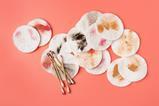

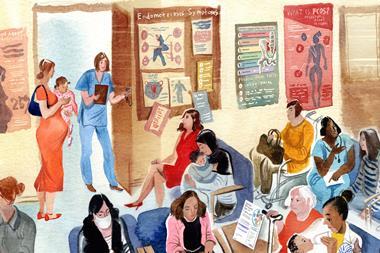
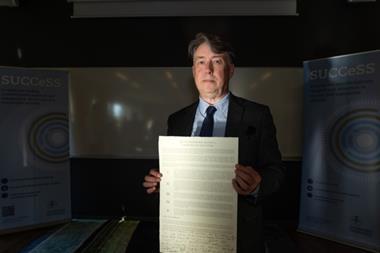






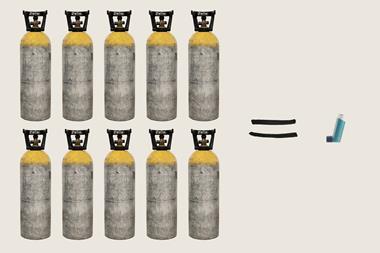
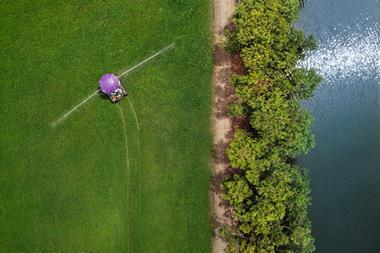
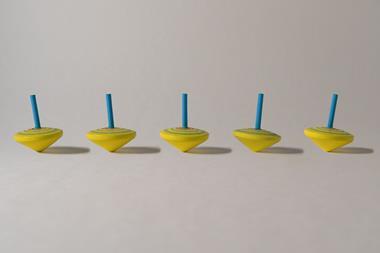

No comments yet